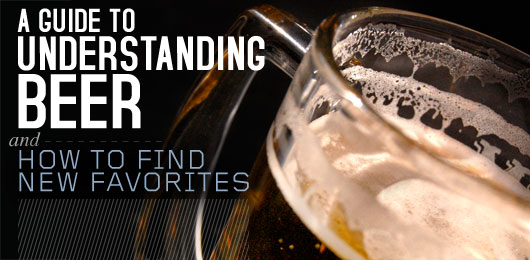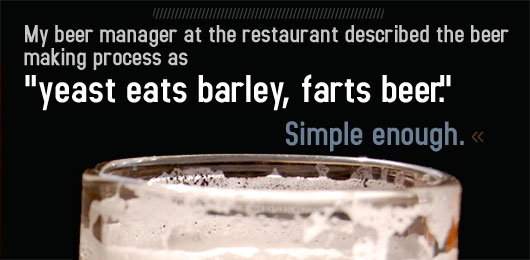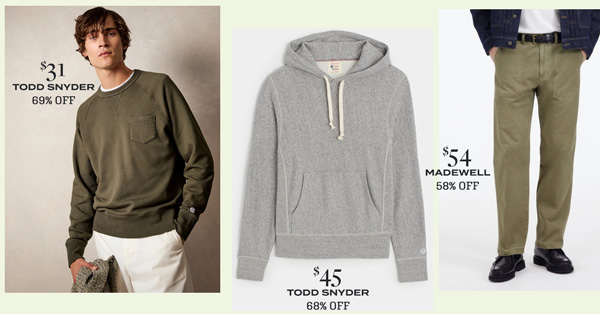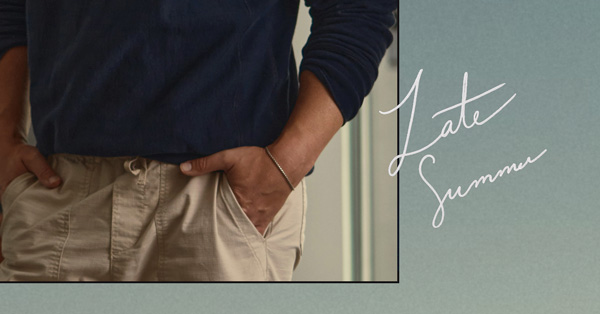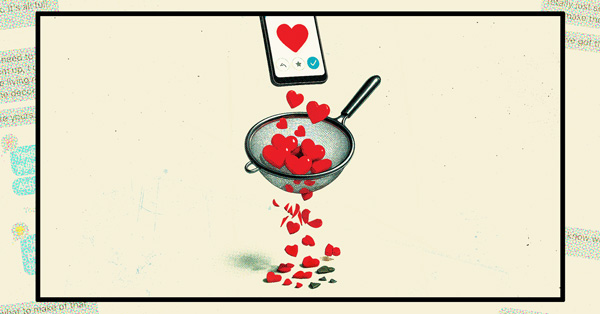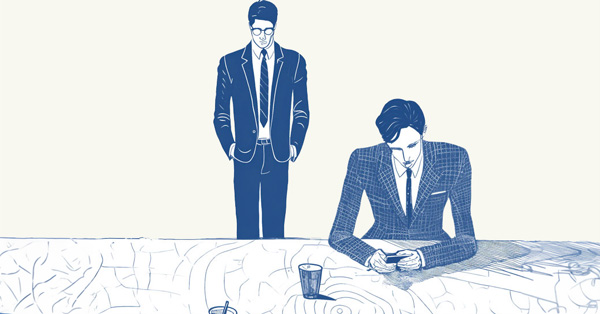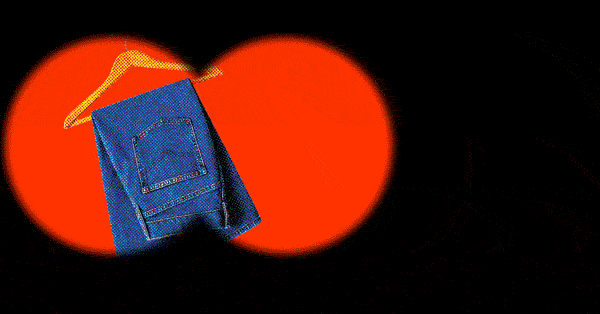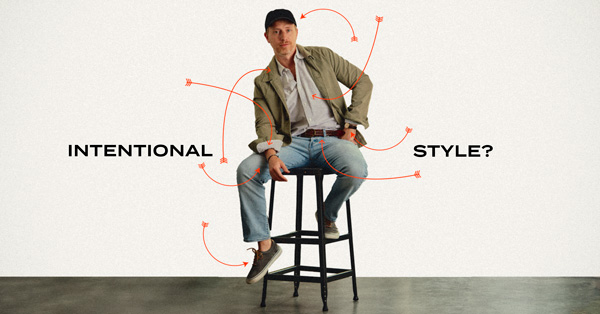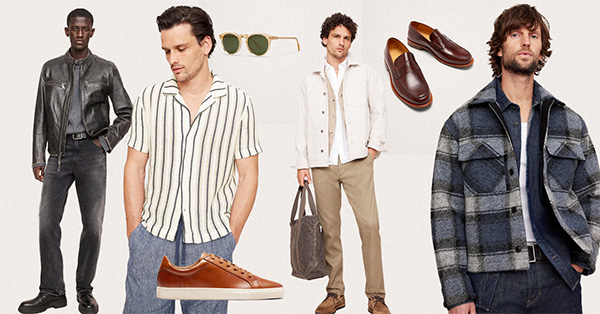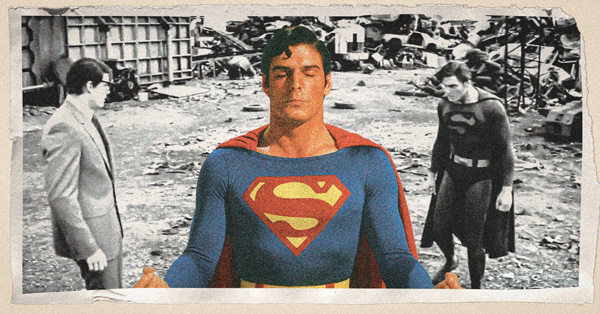So either you or your girlfriend has decided it's time to stop ordering something that tastes like a fraternity's keg spout every time you go out for dinner. Avoid switching to diet cran-cocktails by learning how the brewing process works, how those variables affect taste, and how to discover new favorites without blowing $8 on something you don't like.
By Shaun Conway
When out at a bar known for its large beer selection, many people are torn between their desire to pick something interesting and their desire not to pay $10 for a beer they might not like. Without a decent knowledge of your likes and the reasons behind them, you come up short. You go with something safe, never to discover your perfect beer; or you pick something different you ultimately do not like. This has to stop. Beer should never leave you feeling inadequate; that's what team sports are for…
Just to set the record straight, I am a 25-year old woman living in DC and working at a Belgian Restaurant known for its great selection of over 100 Belgian beers. Yes that's right, over a 100 types of beer from a country the size of Maryland. I started my beer studies when I lived abroad in Belgium in college. I've advanced since then by trying craft brews, visiting breweries (Dogfish Head is a favorite) and watching documentaries, like Beer Wars. I love beer and I've learned to try new beers by finding common features that, to me, make a beer “good.”
So, let's learn about beer and how to find the beer that's “good” to you.
Pour some sugar on me (and by sugar I mean grains)
Beer consists of four main ingredients: grains, yeast, water, and hops. My beer manager at the restaurant described the beer making process as “yeast eats barley, farts beer.” Simple enough. The most commonly used grain is barley. Other beers are made with wheat (Belgian Whites, Witbier, Hefeweizen) or rye (can't say I've ever had one). The mass-marketed beers are largely made with rice and corn (cheap grains that have less flavor). The quality and character of a beer depends on the type of grain used.
But beer cannot grow from grain alone. First the grain is malted, which means it is soaked in water and cooked to different levels that determine dryness and color, etc.. Once malted, grain contains the sugar needed to produce alcohol. But grains don't do it alone.
What's yeast got to do with it?
Yeeeeeeast. Yeast. It's an odd word and an oddly complex organism. But, yeast is the difference between an IPA (Dogfish Head 90 minute) and a Pilsner (Stella Artois). The end product depends on the type of yeast and the temperature at which the yeast is maintained.
- Yeast for Ales is top fermenting and thrives at warmer temperatures, ranging from 61 to 75 degrees Fahrenheit. These yeasts are less efficient at consuming sugars, ultimately producing higher alcohol contents. Top-fermenting yeasts are used for brewing ales, porters, stouts, Altbier, Kölsch, and wheat beers.
- Bottom fermenting yeasts consume sugars at lower temperature levels and tend to sink to the bottom during this process. Lager styles made from bottom-fermenting yeasts include Pilsners, Dortmunders, Märzen, Bocks, and American malt liquors.
I get high with a little (or a lot) of hop, my friend
- Fact: “Hoppy” is to the beer world as synergy is to the business world. That said, I am guilty of calling a beer “hoppy.”
- Fact: Hops are a relative of the cannabis plant (beer, literally takes the edge off).
- Fact: Every beer is a little hoppy.
It's the volume and the timing that make a beer more or less “hoppy” in flavor. To balance the sweetening role of the grains, hops add bitter and spicy flavors. While the beer is boiling, the brewer sprinkles or dumps hops into the mixture. Even the lightest lager has a little bit of hops added to reduce the sweet flavor of the grain. Surely, this divine combination was revealed to man by a higher power.
Self-proclaimed “hop-heads” like Sam Calagione of Dogfish Head use a method called dry-hopping (sounds dirtier than it is). As Calagione writes in his book, “He Said Beer, She Said Wine,” many of the hoppiest beers around get that way when the brewers add hops after the beer is done boiling and sometimes even after fermentation is complete.
I still haven't found what I'm looking for (in a beer)
So now that we've broken down the basics on what makes beers different from one another, we can evaluate our beer preferences.
Lager
Beers made with bottom fermenting yeast with a minimal amount of hops added tend to be crisp, clean, drinkable. They aren't fruity because the bottom fermenting yeast eats away more sugars from the grain. Within this family, the variations in flavor and color depend on the type of grain used to produce the malt.
- Pilsner malt and corn produce a mild taste like toast or fresh bread.
- This family also includes some darker and amber beers (Yuengling, Sam Adams, etc.). These lagers are a little spicier with a toastier flavor than pale lagers.
- Intensely flavorful lagers have a noticeable texture in your mouth, higher alcohol content and a noticeable presence of malt, hop or both.
Ale
These beers vary widely in their end taste and include Stouts, Flemish Red Ales, Triples, and IPAs. Luckily, switching it up from one ale to another isn't a sin and, honestly, beer monogamy is just plain boring.
- Pale ales tend to be heavily hopped; they are herbal, fruity and complex.
- Dark Ales are just the opposite; their hops are subtle and their malt flavors shine through often with a taste of dark fruit like raisin or cherry, though sometimes they have a coffee-like taste.
- Finally there are strongly alcoholic ales that can be either light or dark. As an example, Belgian Triples have alcohol levels of 12% at times, but they are a beautiful golden color with a nice frothy head. Dubbels, in their deep brown glory, also fall into this category. They are not as spicy as a dark ale, but their malty flavor is almost like caramel.
Go and get (beer), I got (beer) on my mind, nothing better, the feeling is so fine
Now you can classify beer, so divide and conquer. Do you generally dislike lagers? Do you like ales, but only sour ones? Do you prefer to drink your bread? Would you rather keep it simple and straightforward? When you try something, think about why you don't like it. Start to use adjectives to describe what you're looking for. And don't limit yourself, if it reminds you of Philly soft pretzels or the first day of fall, then say that. Beer is not snobbish; there are no right and wrong ways to explain why you like something.
Once you find a type of beer you like, don't stop there. Your server is there to help you. Describe what you want. “I like X beer, because it has X and X qualities. What is something similar?” I'm always happy to spend a few minutes discussing the virtues of various beers. Believe me, everyone benefits from your efforts to find your “good” beer. Once you've got it, take someone under your wing, show them the path towards their first “good” beer. It's almost as satisfying as beer itself — almost.
Shaun Conway is a politically-oriented freelance writer who lives in Washington, DC. Shaun says her political writing and beer knowledge aren't really that dissonant. “In Washington, the best political conversations happen over a good beer (or 3).” You can find more from Shaun on her Capitol Hill neighborhood blog: http://dcintraspective.blogspot.com/.



